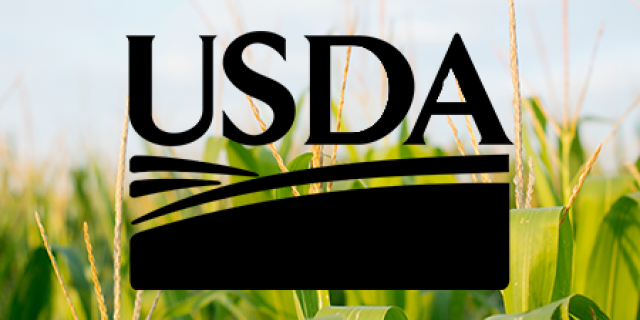Excessive rains, South America’s crop and trade war spats are a few of the main factors affecting the markets so far this year. It’s only fair to ask if the May World Agricultural Supply and Demand Estimates (WASDE) report will be overshadowed by the topics flashing in the headlines recently. The May crop report has historically contained critical information for the marketing year, outlining current inventories, demand and crop yield projections for the 2019 season. The report will be released on what could be a volatile day for the markets - Friday, May 10 at 11 a.m. central time.
Why it may be overshadowed
President Trump’s recent actions related to increasing tariffs could lead to possible price volatility today. Nearly all markets plummeted after Trump’s tweet on Sunday, May 5, about raising U.S. tariffs on $200 billion worth of Chinese imports from 10% to 25%. The increase went into effect on Friday, May 10, at 12:01 a.m. due to the unresolved deal. China threatened to retaliate without elaborating details.
However, despite high tensions, Beijing negotiators traveled to the U.S. for further trade discussion. Notwithstanding the optimistic tone of Trump’s recent tweets, some commentators believe the odds of the two parties reaching a deal are thought to be below 10% as the Chinese made systematic changes to over 150 pages of the U.S. trade deal in the most recent negotiations. Major hang-ups between the nations are enforcement of trade agreements in the future, open markets in China for U.S. companies and protection of intellectual property rights.
Importance of May WASDE
Despite the timing, the crop report is still critical in providing key information for the new marketing year:
- New crop numbers: The May WASDE report will be the first report this year to contain estimates for the 2019-2020 crop year. The USDA’s estimate for planted acres and yields, and thus production, will be important numbers for consideration.
- Crop acres: Acreage switches have been mentioned before, and the WASDE report will begin to reveal how many – if any – soybean acres switched to corn. The USDA’s March Prospective Plantings report suggested a sizeable switch from beans to corn, but skepticism remains as corn and bean acres are traditionally rotated for high yield. Additionally, excessive rains across the U.S. have impacted planting and potentially limiting available acerage.
- South American crop: This will also be the first WASDE report to contain 2019-2020 South American crop production. For months, it has been reported that the country will have a large crop, creating interest in the estimates contained in the WASDE report.
- China’s ASF: African swine fever (ASF) in China continues to threaten its domestic protein supply. Current estimates project China lost more hogs than the entire annual U.S. production at over 150 million head. The WASDE report will provide 2020 livestock and poultry supply and demand estimates, which will shed light on how the USDA believes ASF will affect trade flows and impact Chinese soybean import demand.
- Short funds: The most recent Commitment of Trader’s report showed funds are massively short. A bullish indicator in the report could drive prices up as traders exit shorts, or prices could return to their lows, if we get more bearish data.
Bottom line
The May WASDE report is historically critical. However, this year it is competing with multiple external factors with all eyes on Trump’s Twitter account.
DISCLAIMER
Commodity markets have inherent risk and Tyson Foods, Inc. assumes no liability for the use of any information contained herein. Information contained herein was obtained from sources believed to be reliable but is not guaranteed as to its accuracy. Any examples given are strictly hypothetical and no representation is being made that any person or entity will or is likely to achieve profits or losses similar to those examples. Neither the information, nor any opinion expressed, constitutes a solicitation to buy or sell futures or options on futures contracts. Every effort has been made to ensure the accuracy of the information and market data which is provided herein. Information has been obtained by Tyson Foods, Inc. from sources believed to be reliable. However, because of the possibility of human or mechanical error, Tyson does not guarantee the accuracy, adequacy of content or any information and is not responsible.


